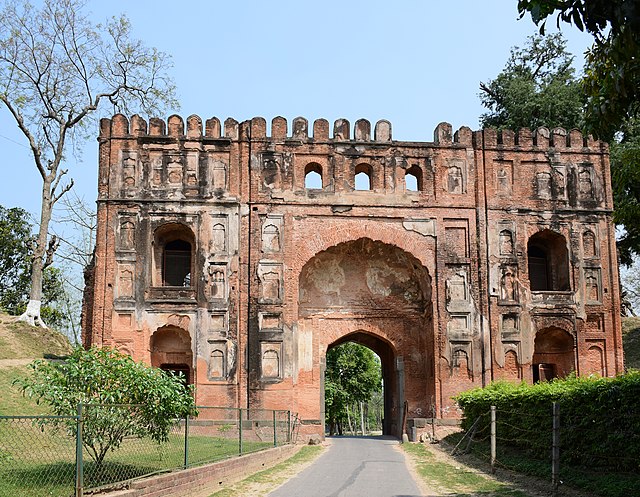The Adina Mosque (N-WB-81) is a former mosque in Malda District, West Bengal, India. It was the largest structure of its kind in the Indian subcontinent and was built during the Bengal Sultanate as a royal mosque by Sikandar Shah, who is also buried inside. The mosque is situated in Pandua, a former royal capital.
Exterior façade of the mosque
The central mihrab of the mosque
Arches and columns in the interior of Adina Mosque. The elevated platform was the royal gallery where the Sultan prayed.
Central prayer hall in the mosque
Malda district, also spelt Maldah or Maldaha, is a district in West Bengal, India. It lies 347 km north of Kolkata, the capital of West Bengal. Mango, jute and silk are the most notable products of this district. The special variety of mango, Fazli, produced in this region is popularly known by the name of the district and is exported across the world and is internationally acclaimed. The folk culture of gombhira is a feature of the district, being a unique way of representation of joy and sorrow in daily life of the common people, as well as the unique medium of presentation on national and international matters. According to the National Investigation Agency Malda is believed to be a hub of a fake currency racket. It is reported that 90 per cent of the fake currency that enters India originates in Malda.
Image: The Tomb of Fateh Khan, Gaur, WB
Image: Lukachuri Gateway at Gaur in Malda District 02
Image: Ramkeli the temporary home of Lord Sri Chaitanya 21
Image: Baraduary Masjid or the Great Golden Mosque








